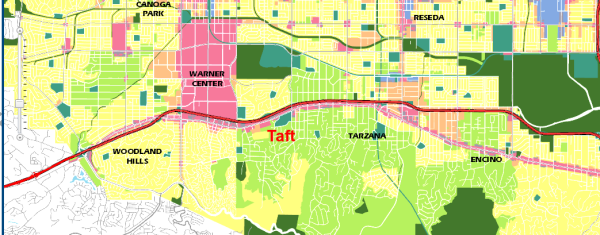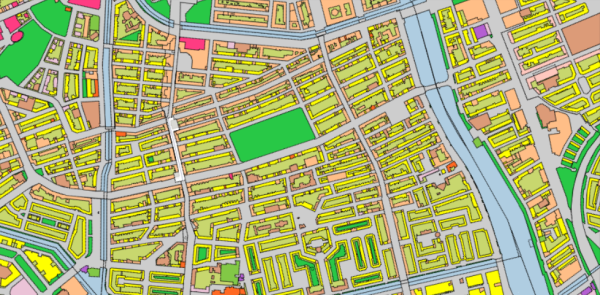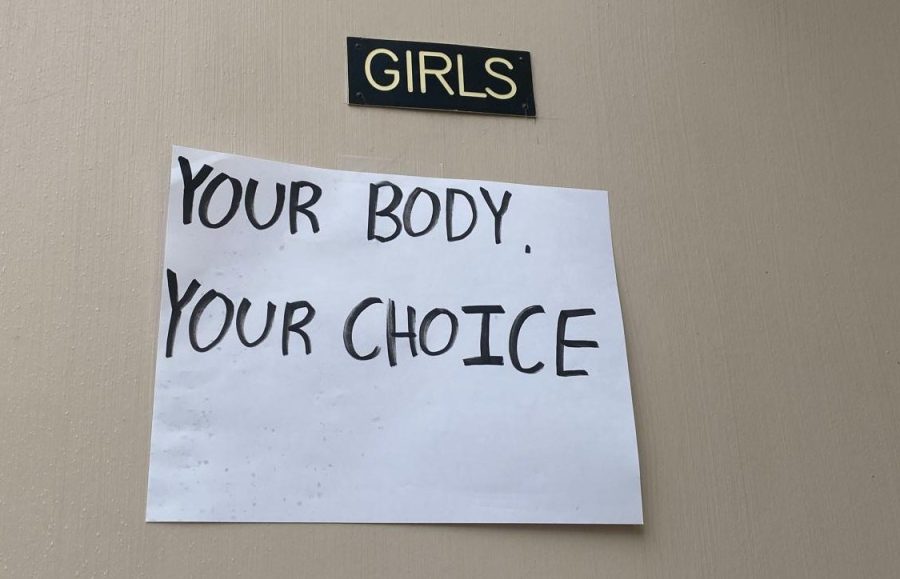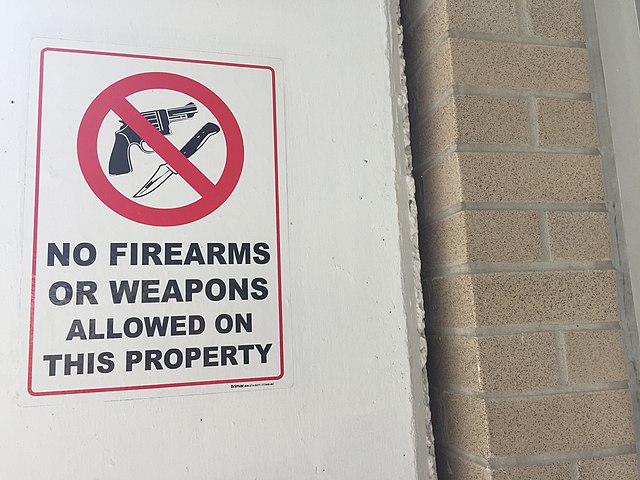If you’ve lived in LA for any amount of time, you’ve probably noticed a few things about the city. For one, living here is incredibly expensive. The average rent is well above two thousand dollars, and property tax is at 1.25%, meaning the average homeowner is paying just under fourteen thousand dollars a year in tax alone.
Another thing you will have noticed is how scorching hot the city gets in the summer, especially downtown. The city is blanketed in asphalt, absorbing heat from the sun and becoming hot enough to cause burns. The destruction of habitat leaves the valley devoid of wildlife, and the lack of trees and plants often means little shade or respite from the heat’s onslaught.
This is all not to mention how difficult it is to navigate the city. Walking to school is an impossibility for most students at Taft: the distances are too great and the sidewalks are dirty, poorly maintained, and far too often nonexistent. Public transportation is well below subpar, often inconsistent, inconvenient, and uncomfortable. Driving is the only answer for those who can afford to do so, leading to an unhealthy, unhappy population.
These problems may seem mostly separate, but there is one policy change we could make which could drastically reduce the cost of living, the scorching heat of summer, and the lack of transportation opportunities.
We need to abolish zoning laws.
What are zoning laws?
‘Zoning’ refers to ordinances (local laws) implemented by the city of Los Angeles to regulate and dictate what can be built where. For example, the city has decided that certain areas should be only for single-family homes, while others should be only for heavy industry, such as manufacturing and refining. In theory, this makes sense. Few people want to live next to a power plant, and laws like these protect such situations from happening. However, zoning laws are not the helpful tools many think them to be. Our zoning laws are leading to inefficient, expensive, hot, unwalkable cities.
Below is a map of the zoning of the area around Taft High School, the cyan area directly above the Taft label is the area zoned for our school.
zimas.laciy.org

Key:
Light Green – Minimum density residential
Light Yellow – Low Density residential
Orange – Medium Density residential
Green – Public Parks
Pink – Commercial
Cyan – Public Facilities (e.g. Schools)
Light Blue – Limited Industry
Grey – Mandatory Parking
Almost all of the valley is zoned for either minimum or low-density residential density housing, with pockets of mixed development only located next to wide, high-speed roads. Commercial developments are highly centralised around these same large roads, leaving most residents miles away from the nearest grocery stores and other essential services.
Compare this to this snippet of the zoning map of Amsterdam, which while covering a smaller area shows far more complexity and efficient land use.

Key:
Yellow – Housing
Chartreuse – Gardens
Light Pink – Mixed use
Dark Pink – Social (e.g. Schools)
Bright Pink – Retail
Green – Parks
Orange – Catering
Purple – Business
The great variety of zoning areas in such a neighbourhood ensures all residents are within a short walking distance from stores and utilities. Despite the density, green spaces abound, with many gardens and public parks on almost every corner. This design philosophy is human-centered and ensures the space around you is pleasant, not full of roaring cars and bleak concrete.
How do our zoning laws affect the cost of living?
Our style of zoning raises the cost of living in three key ways: housing supply, utilities, and transportation.
It’s no secret that housing prices in LA are high, a large part of that is simply that there is not enough housing to go around. Developers would love to gobble up this high demand, as their buildings would sell easily, quickly and with profitable prices. And all this could be accomplished with no subsidies, payments by the government to reduce costs, required as there already exists healthy demand.
Sadly, our restrictive zoning laws mean that developers have their hands tied on the matter, unable to build anything but expensive detached housing throughout the majority of the valley, as our laws prohibit the building of more affordable accommodations, like townhouses, duplex, apartments, etc, keeping prices high and prospective buyers dry.
The small areas that actually are zoned for mixed development and medium-density housing (e.g. townhouses, low and mid-rise apartments) are expensive by nature of their scarcity. When developers acquire this land, in order to turn a profit, they use the land mostly for high-end and luxury apartments which demand higher rents. This leaves the valley almost devoid of low-income housing.
It’s not just the zoning ordinances specifically that are contributing to sky high housing prices, the housing market also has to contend with minimum lot sizes and parking requirements. Even small homes must be built on relatively large plots of land by law, so it is simply not economically viable to build smaller, cheaper houses.
As for apartments, parking minimums remove the owners’ agency from choosing how many parking spaces they need and impose a minimum standard which means that apartment complexes are often forced to have redundant parking which is not needed to accommodate tenants, which takes away space that could be used for housing.
Utility costs also play a role in the high cost of living in the valley, and our inefficient land is to blame. Mathematically, the more powerlines, plumbing, and roads we must maintain the more it will cost, and sprawling suburbs ensure the bill keeps racking up.
The massive fields of single-family homes stretching the breadth of the valley demand a massive power and plumbing network, which demands massive amounts of maintenance. If the San Fernando Valley was zoned like Paris, which houses ten times as many people in the same piece of land (and is arguably ten times more beautiful), the entire population would only demand an electric utility grid a tenth of the size.
The long distances between housing, business, and commercial areas mean that owning a vehicle is a requirement to live and work in the city in a way that is not present in better-planned cities. In LA, there are nearly as many cars as there are people, compared to roughly half the ratio in similar-sized cities such as London, in large part due to London’s practice of zoning commercial and recreational areas within walking distance of homes.
This dependence comes at a heavy price tag. On average, owning a car in the valley costs around ten thousand dollars a year, a third of the median income. The costs don’t just fall upon the individual, as the construction and maintenance of roads cut a large portion of the city budget. American cars rip up the roads at record rates due to their ever-increasing size, and asphalt wears away far quicker than rails or footpaths.
The inefficiency of our zoning is slowly bankrupting us, but it doesn’t end there.
How do our zoning laws affect the temperature?
The localised temperature of an area depends on a variety of factors, and our excessive asphalt roads and concrete sprawl seem almost optimised to keep temperatures high and cooling minimal.
Vegetation provides a huge role in the natural cooling process of the surface. Shade from trees and other large vegetation protects the ground from the sun, keeping it cool for passersby year round. Additionally, plants cool the air around them through a process known as evapotranspiration, reducing the temperature by as much as three degrees Fahrenheit.
Asphalt opposingly maximises heat. The complete lack of vegetation removes a vital natural cooling process, and the black asphalt absorbs heat from the sun more than any other colour. Asphalt holds heat far longer than other materials, keeping the ground hot well past sundown.
The overabundance of asphalt and lack of vegetation is not the only issue. Cars produce massive amounts of heat on the streets themselves and also emit massive amounts of greenhouse gasses. These gasses not only contribute to climate change but create a layer of smog which hangs over the city. This creates a greenhouse effect over the city itself, trapping heat in even further.
If we want cooler summers, we need to change our zoning laws to allow for greenery and fewer roads and cars.
How do zoning laws affect transportation?
As previously explained, low density zoning and lack of mixed development create car dependency but also ensure that other transportation methods which are healthier and safer never become viable.
Take, for example, cycling. In the valley, it is regarded as little more than a hobby, and for good reason: it is completely impractical and unsafe to cycle in a city with massive distances and high-speed traffic. Cycling is a great way to stay in shape, and when only the most dedicated can do it, a valuable health tool is denied to most people, with less than 0.6% of Angelinos commuting to work by bike.
Similarly, trains from short to long-range travel become completely useless if you must drive to the station in order to ride them. Trains are hugely efficient for moving people, and far, far safer than driving. The advantages that trains may offer are negated by the lack of availability as too few stations imply that users will still need to rely on other transportation methods. A train holds no benefit if users still need to rely on other methods (pedestrian or automotive) even while using the spread-too-thin stations.
These are not immutable aspects of bicycles and trains, they are the result of car-centric policy. There is another way – in countries like the Netherlands, the average person stays in shape by biking to work every day and takes safe and efficient trains between towns and even into other countries.
What can we do?
The number one way to improve our cities is to get involved in local politics. Write to your local representatives – if you live in the valley that would be Brad Sherman – for example to let them know that you want reform to your district’s zoning policies. If you do not know who your representative is, resources such as findyourrep.legislature.ca.gov can find this information for you. It is also imperative to be informed in these local elections. Learn what the candidates stand for, and vote for candidates who will reform our ridiculous zoning laws.
Change, as it often does, starts with you.















Not William • Mar 18, 2024 at 3:00 pm
Wow this is a great article!!!
Also not william • Apr 12, 2024 at 2:49 pm
I agree !!!